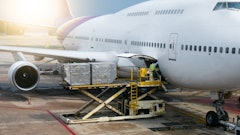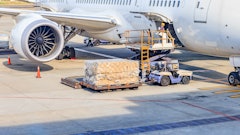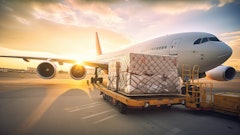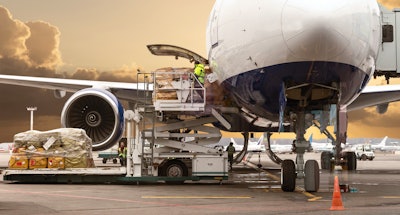
New trade policies introduced by the United States have ushered in a challenging period for the aviation industry, particularly the air cargo and freight sector.
“The industry was set to build on a record 2024 performance with strong prospects for 2025 and beyond after years of post-COVID rebuilding and growth. It would be unfortunate and counterproductive to destabilize this important industry and its complex ecosystem, and we are hopeful that new international trade agreements can be reached with common-sense exemptions and reduced levies,” according to Cassel Salpeter & Co. “Until tariff uncertainties are resolved, it remains difficult to forecast the future of the industry and supply chains. We are cautiously optimistic that the industry will be able to adapt with new routes and strategies to weather the storm, executing a smooth landing after tariff turbulence.”
Despite the challenging landscape, the air cargo industry is exploring strategies to adapt, while hoping for policy resolution. And, new opportunities may emerge through expansion into additional global markets and premium air cargo pricing, according to datasets released by Cassel Salpeter & Co.
Key takeaways:
· Air freight operators might take proactive measures to mitigate tariff impacts by relocating or onshoring some of their operations and adopting hybrid models that combine direct air fulfillment with pre-stocked forward warehouses in key markets. This approach has the potential to establish new partnerships with countries that can reach negotiated settlements and reduced tariffs, which could diversify existing freight routes and generate additional business for air freight carriers.
· U.S.-based cargo airlines are actively seeking ways to offset higher import costs. Lower fuel prices can provide relief if demand remains stable, while rising jet fuel prices allow airlines to implement fuel surcharges that typically include profits above actual costs.
· Another cost-reduction opportunity involves consolidating air and ocean shipments under single customs entries, potentially reducing customs brokerage and government processing fees per shipment.
· The International Air Transport Association (IATA) downgraded its 2025 guidance for air cargo demand from its 5.8% growth forecast, issued December 2024, to a revised forecast of near-zero growth for the year. This represents a significant reversal for an industry where air cargo volume for passenger and all-cargo airlines grew 12% in 2024, reaching all-time highs.
· Air cargo volumes in the United States through May have declined approximately 25%, year-over-year, per estimates from freight forwarders and customs brokers. The decline has accelerated since May 2, when the de minimis exemption ended for goods from China. Since the Trump administration announced reciprocal tariffs in April, China-U.S. cargo volumes have dropped by up to 60%. Tariffs have severely impacted e-commerce bookings, which fell approximately 50% in May 2025.
· The daily number of trans-Pacific air freighters arriving at the Top 18 U.S. airports has decreased by approximately 30% since April, according to Cirrus Global Advisors. Current forecasts suggest the air cargo market could experience a continued downturn in the second half of the year due to the persistence of new U.S.-imposed tariffs and potential retaliatory measures taken by other countries.
· The impact of new U.S. tariff policy will extend far beyond immediate cost pressures; new trade policy aims to transform international trade and recast global trade routes. As a result, the tariffs have been particularly destabilizing to the airfreight industry, driving price volatility and forcing comprehensive route planning overhauls, particularly within the e-commerce sector.
· The elimination of the $800 de minimis exception for imported goods, combined with increased tariffs, is expected to send air cargo volumes plummeting for low-value e-commerce shipments. With de minimis exemptions unlikely to return, Chinese e-commerce leaders now send products into the United States via bulk sea freight shipments to U.S.-based warehouses and distribution centers, abandoning their use of individual air shipments for direct-to-consumer fulfilment that previously drove cargo aviation growth.
· The air cargo sector faces major headwinds within this evolving tariff environment. Cargo airlines must navigate an increasingly complex landscape of disrupted trade flows as manufacturers and retailers reconfigure supply chains in response to new levies. This will reshape network planning, capacity deployment, and aircraft acquisition strategies as carriers adapt to altered trade routes and cargo volumes.
· The implications of new trade policies are concerning and include declining demand for freighter aircraft and fleet expansion. This may be amplified by a downturn in freighter conversions, driven by rising component costs and procurement delays. Dedicated freighters increasingly dominate global trade volume over passenger aircraft belly cargo; volatility in the freighter market can drive significant systemic impacts.






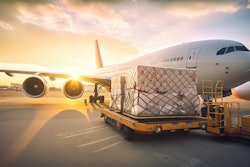

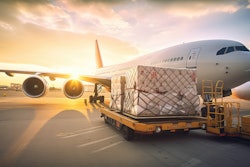

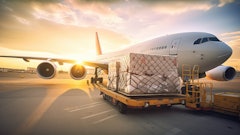


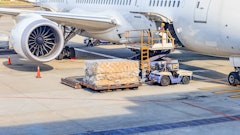
![Pros To Know 2026 [color]](https://img.sdcexec.com/mindful/acbm/workspaces/default/uploads/2025/08/prostoknow-2026-color.mduFvhpgMk.png?ar=16%3A9&auto=format%2Ccompress&bg=fff&fill-color=fff&fit=fill&h=135&q=70&w=240)
